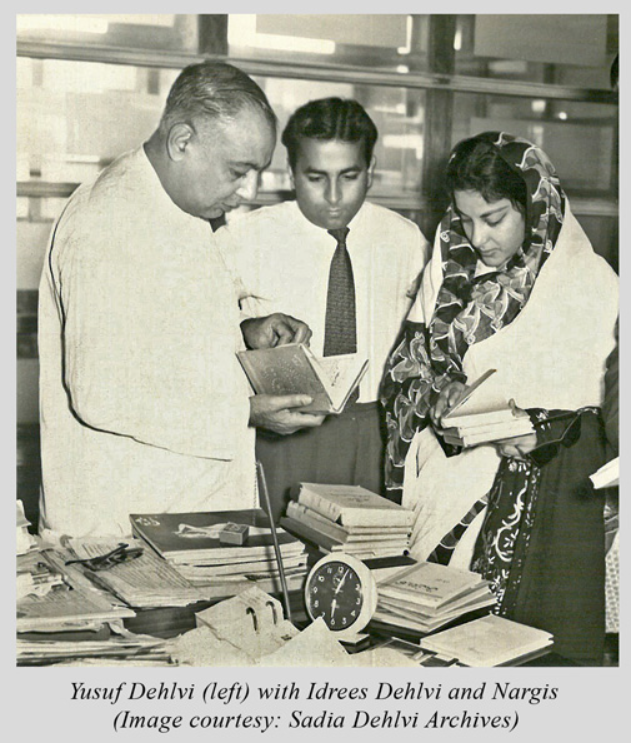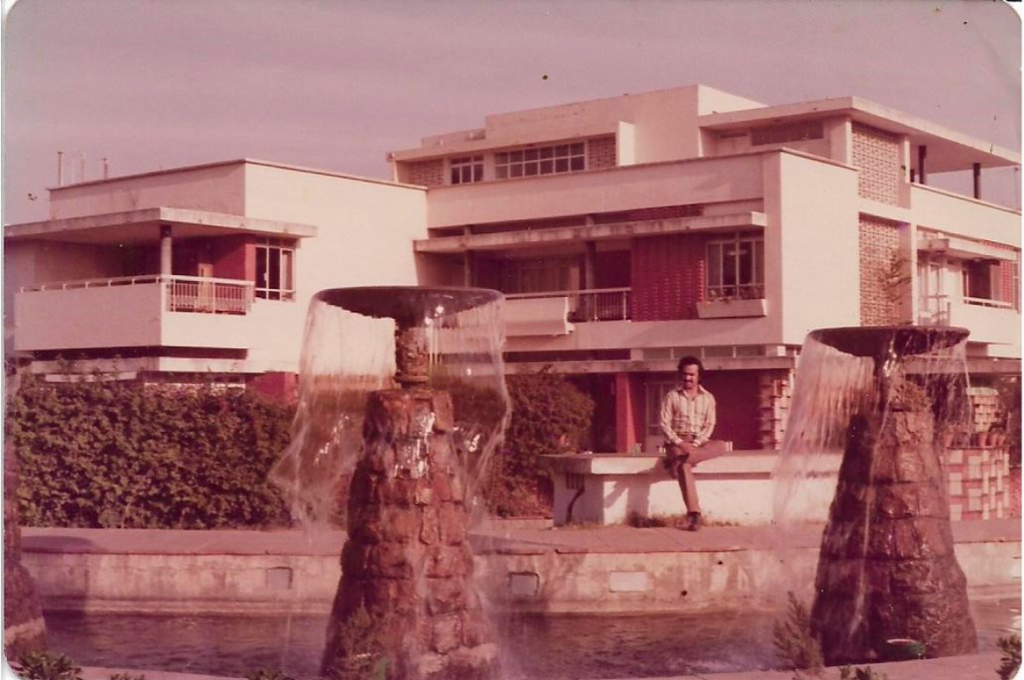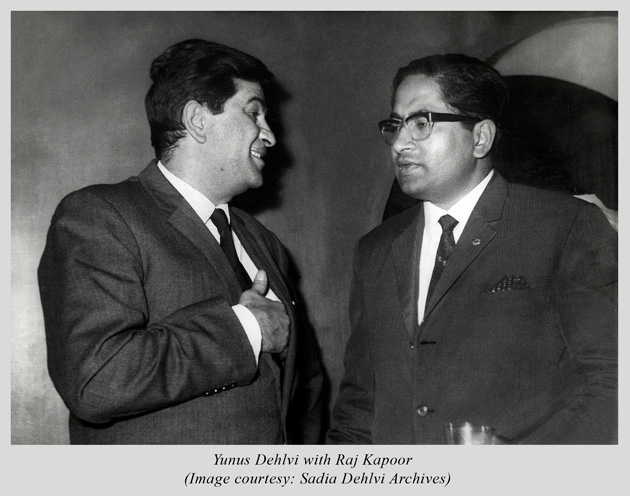Once upon a time, there was a magazine so popular that it was smuggled across the Indo-Pak border. It’s hard to imagine that in the era of chaos and instability, people were reading literature, that too with so much enthusiasm. Shama magazine is evidence of the glory Urdu literature enjoyed.
With the increasing popularity of digital media, it’s high time we talk about the legacy we left behind. Most of us don’t know about this magazine, but Shama is thought to be the world’s biggest chain of Urdu language magazines. Let’s dig deep into its history.
What was Shama?
Shama was an Urdu magazine that came to the forefront in the 1940s. The first copy of this magazine was released by Yusuf Dehlvi, the famous Delhi businessman dealing in real estate and leather, in 1939. Initially, it was sold for two annas per copy.
The very first issue of Shama had the following couplet printed on it,
Lo shama hui raushan, aane lage parwaane
Aaghaaz jab aisa hai, anjaam khuda jaane
(Behold, the candle is burning; the moths are coming
When the beginning is like this, God knows how it will end)
Though partition separated a lot of people, the enthusiasm of the Shama audience remained unaffected. As the people migrated, the magazine got introduced across the border, and the audience grew. Soon, Shama became an addiction. In no time, the magazine was being smuggled across the border because of its popularity.
Though there is no evidence to support the statistics, Shama is believed to be the first Indian monthly journal that surpassed 100,00 subscribers. The monthly sales of Shama were more than 1.5 lacs.
Famous authors, poets, screenplay writers, and critics wrote for Shama. Some of them include Rajinder Singh Bedi, Ismat Chughtai, Krishan Chandar, Jigar Moradabadi, Firaq Gorakhpuri, Khwaja Ahmed Abbas, Hafeez Jalandhari, Hasrat Jaipuri, Qateel Shifai, Salam Machhli Shehri, Razia Sajjad Zaheer, Raja Mehdi Ali Khan, Balwant Singh, Kanhaiya Lal Kapoor, Ram Pal, Sahir Ludhianavi, Ram Lal, Siraj Anwar, Basheshar Pradeep, Shafiuddin Naiyar, Kaif Ahmed Siddiqui, Dr. Kewal Dhir, KP Saxena, Azhar Afsar, Prakash Pandit, Aadil Rasheed, MM Rajinder, Jilani Bano, Naresh Kumar Shad, Abrar Mohsin, Masooda Hayat, Ishrat Rehmani, Abrar Mohsin, Khaliq Anjum Ashrafi.
The Man Behind Shama
The name that Shama holds today is the result of the consistent efforts of three generations of the Dehlvi family. The management of Shama was handled by its founder Yusuf Dehlvi, and his three sons, Younus, Idrees, and Ilyas Dehlvi. Besides, the wives of Yusuf also contributed to the management of the magazines. They frequently sent articles for monthly publications.

Shama Magazine Subsidiaries
Later on, these members of the Dehlvi family also started subsidiaries that were quite successful in their own respective fields. By the 1950s, Shama had grown a lot. Under the umbrella of Shama, Dehlvis launched a magazine for women, Bano. Soon after, they found a magazine for children, Khilauna, a breaking point in entertainment literature for children. It included children’s stories, many fun activities, and a portion for sending pictures.
Soon after, a new crime-themed magazine, Mujrim, was launched. During the 1960s, the enthusiasm of Urdu readers decreased, and there was an inclination towards the Hindi language. Dehlvi’s launched a Hindi version of the Shama Magazine, Sushma.
In the 80s, the daughter of Illyas Dehlvi, Rasia Dehlvi, developed a keen interest in fashion and embroidery. Keeping in view the interest and expertise of Rasia, a new magazine, Rasia Kashidakari, was launched under the chain of Shama.
The Legacy Of Shama Magazine
The reason behind the unprecedented fame of this magazine was its integrity. The glamorous news of the film industry was usually laced with salacious and inappropriate remarks, which you can also witness today. Gossip was the central part of every news related to the film industry.
Shama magazine offered a paradigm shift. During the 6 decades of popularity, there was not even a single time when Shama presented gossip or inappropriate content. Even when the magazine had to break a controversial story, it mentioned only facts without the addition of any immoral or tawdry remarks.
A great example is airing the news of Dilip Kumar’s second marriage. The magazine handled this controversial issue professionally and stated facts with the necessary evidence, such as the nikahnama. At the same time, other magazines were submerged in juicy gossip related to this marriage.
It was the reason why Shama soared high than its competitors. Besides the integrity it maintained throughout its publication period, some specific columns of this magazine called for special attention from the audience.
Sitaron Ki Dunya
Idress Dehlvi handled the famous column “Sitaron ki Dunya” and wrote under the name of Musafir. This column gave the audience an insight into the lives of famous actors and actresses. Whether you want to know about the shootings of your favorite actor or are looking forward to getting insights into the recent Bollywood party, Musafir covered everything.
Here too, there was no element of gossip. Instead, the audience got glimpses of what happens in the lives of their favorite people. The daughter of Yunus Dehlvi (Idress Dehlvi’s brother), Sadia Dehlvi, considered this column a great example of a certain kind of old-school Urdu journalism. According to her, the distinguished feature of this column “was a richness of intimacy, borne out of personal contacts and being a part of the world of which you wrote.”
Adabi Muamma
Another part of the magazine that was equally famous among the audience was Adabi Muamma. These were crossword puzzles. What made them even more interesting for the audience was the hefty prize they carried.
People could only submit answers with the coupon attached to the magazine, which meant they had to buy the magazine to participate in the competition. Though many saw it as a marketing tactic, it played a significant role in igniting people’s passion for reading Urdu literature.

The Fame Of Shama And Dehlvis

Shama Kothi – The residence of Dehlvis
Shama was famous among commoners as well as literary personalities and Bollywood actors/actresses. Shama Kothi, the residence of Dehlvis, was frequently visited by Bollywood actors. Yusuf Dehlvi had great relations with many famous personalities, and his acquaintances read Shama ardently.

The famous Bollywood actor Dharmendra once said that his desire to work in films was aroused by reading Shama. He was a great fan of the magazine. Besides, on the death of Shama’s founder, Yusuf Dehlvi, in 1985, the magazine published special condolence messages from President Giani Zail Singh and Prime Minister Rajiv Gandhi.
Nargis also used the magazine as a medium to express her grief on the death of actress Meena Kumari in June 1972. She wrote a heartfelt essay mourning the loss of a fellow actress.
“Woh mohabbat ki talaash meiñ ek pyaase ki tarah maari-maari phirti thi—kahiñ se ek boond pyaar mil jaaye, magar pyaar ki yeh boond usay na mili. Woh tadapti hi rahi, tarasti hi rahi—tanha rahi, akeli rahi aur akeli hi ga’ee. Us ke is akelepan se, us ke is dukh se khuda bhi tadap gaya hoga. Magar zaalim insaan, be-his insaan achchhe logoñ ke saath aisa hi karte aaye haiñ, aisa hi karte raheñge.”
(She wandered around looking for a drop of love, but her thirst for it remained unquenched. She writhed in torment, lived a lonely life, and eventually died a lonely death. Even God must have been shaken by her isolation and suffering, but the same can’t be said for cruel and callous humans. They have always ill-treated noble souls and will continue to do so.)
Shama-Sushama Film Awards
Considering the contribution of the Dehlvi family to Urdu film literature, they soon started hosting a film award show, which was equally famous. The Shama-Sushama award show was primarily focused on Hindi and Urdu films and was one of the most awaited events of the year.

The award show hosted some of the most prominent literary, political, and business personalities and remained the talk of the town for weeks. The ceremony was usually held at Ashok Hotel, the famous hotel near the Shama Kothi. The very first Shama-Sushma award show happened on 11 march 1973.
The End Of An Era
When Shama was first published, Urdu literature was at its peak. A lot of songs and screenplays were written in Urdu. By starting Shama, Yusuf Dehlvi created a space for articulated discussion that helped Urdu literature grow.
However, with the rise of the internet in the 1990s, the magazine’s popularity started declining. After 6 decades of glory and fame, the Shama offices closed in 1999.
The most unfortunate fact is that the copies of this magazine are not archived by any institute, not even by the Dehlvi family. Though literature enthusiasts indulge themselves in efforts to preserve Urdu literature, no steps have been taken to preserve one of the very first and greatest Urdu literary magazines. Along with the magazine, the history of Urdu film literature is also deteriorating.
Bottom Line
Given the inclination towards digital media, it’s hard to imagine that there was a magazine so popular not so long ago and that too in Urdu. Shama is a great part of the history of Urdu film literature that we should not forget.




